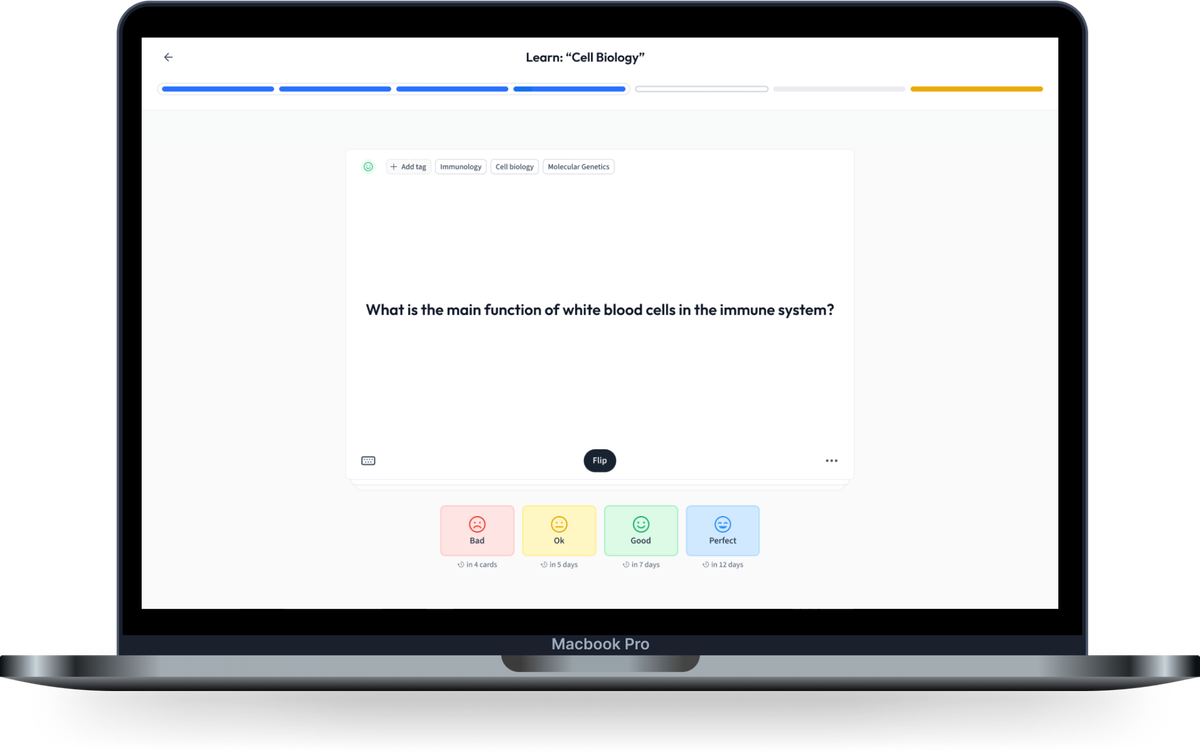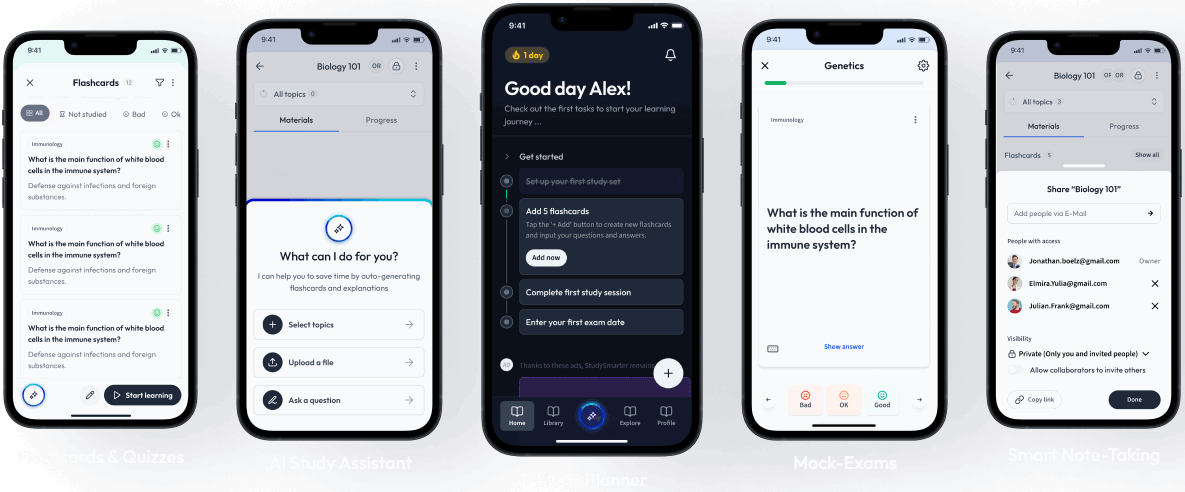Moby Dick: An Overview
Moby Dick is a classic and influential novel that has captivated readers for generations. The story follows the journey of the whaling ship Pequod and its crew, led by the enigmatic Captain Ahab, who is obsessed with hunting down and killing the white sperm whale known as Moby Dick.
Moby Dick Summary
The novel offers far more than an adventurous tale, delving into themes of obsession, revenge, and the nature of humanity. The journey begins after the protagonist, Ishmael, decides to take part in a whaling expedition.
As Ishmael becomes acquainted with the crew, he learns about their motivations and outlooks on life. He soon meets the mysterious Captain Ahab, who bears a personal vendetta against Moby Dick, a white sperm whale responsible for the loss of Ahab's leg on a previous journey.
Throughout the novel, the crew encounters various perils in pursuit of the elusive Moby Dick, all the while dealing with the psychological implications of their actions. The narrative is as much about the external hunt for the white whale as it is about the internal struggle between obsession and reason.
- The novel is separated into three main sections:
- The first section introduces the characters and sets the stage for the journey.
- The second section covers the actual hunt for the white whale.
- The third section concludes with the dramatic final confrontation between Ahab and Moby Dick.
The Author of Moby Dick
Moby Dick was written by Herman Melville, a prominent American novelist, short story writer, and poet. Born in 1819 in New York City, Melville had a varied career before gaining fame as a writer. His experiences as a sailor and his exposure to the whaling industry played a significant role in the development of his literary works.
Herman Melville: An American author, poet, and sailor known for his seafaring tales and exploration of human nature.
Before his success with Moby Dick, Melville wrote several other novels, including Typee and Omoo, which were more straightforward adventure stories. However, it was the ambitious and complex narrative of Moby Dick that earned Melville his lasting reputation as a great literary figure.
Although Moby Dick received mixed reviews upon its initial publication in 1851, it has since been recognized as a masterpiece of American literature and has been adapted into various mediums, such as film, theatre, and even opera.
Setting and Context in Moby Dick
The story of Moby Dick is set during the mid-19th century and primarily takes place aboard the whaling ship Pequod. The novel explores geographical locations across the globe, with Nantucket, an island off the coast of Massachusetts, serving as the main point of departure. The crew journeys across various oceans and seas, including the Atlantic, Indian, and Pacific Oceans.
| Primary Location | Whaling Ship Pequod |
| Main Departure Point | Nantucket Island, Massachusetts |
| Oceans Visited | Atlantic, Indian, and Pacific Oceans |
Moby Dick's publication in 1851 coincided with the height of America's whaling industry. This historical context plays an essential role in the novel, as it provides insights into the significance of whaling and its impact on the lives of those involved. Much of the novel's substance is derived from the actual practice and dangers of whaling, the technical nature of the trade, and the underlying economic motives behind it.
An example of historical context can be found in the novel when the crew describes the hardships and dangers they face—a reflection of the real-life challenges faced by whalers of that time.
In conclusion, Moby Dick remains a timeless and thought-provoking novel that explores human nature, obsession, and the complexities of the whaling industry. Its vivid characters, rich historical context, and unforgettable narrative have undoubtedly secured its place as one of the greatest works in American literature.
Moby Dick Characters
The characters in Moby Dick are a diverse and fascinating mix of personalities, each with their own unique background, motives, and beliefs. Let's explore the prominent figures of Captain Ahab, Starbuck, Queequeg, and Ishmael.
Captain Ahab
Captain Ahab, the enigmatic and driven leader of the Pequod, is one of the most well-known characters in all of literature. A skilled and experienced whaling captain, Ahab pursues the white whale Moby Dick with single-minded determination, displaying his obsession and desire for revenge.
- Lost his leg in a previous encounter with Moby Dick
- Employs the crew of the Pequod to help him bring about the whale's demise
- Represents a complex character whose motivations extend beyond mere revenge
Ahab's obsession with Moby Dick can be seen as a reflection of humankind's attempts to control the forces of nature and as an illustration of the destructive potential of such efforts. His character invites contemplation on themes of pride, ambition, and the nature of obsession itself.
Obsession: A persistent, preoccupying thought or idea that cannot be easily ignored or controlled.
Starbuck
Starbuck serves as the chief mate aboard the Pequod and stands out as perhaps the most rational character in the story. Although an accomplished whaler in his own right, Starbuck disapproves of Ahab's vendetta against Moby Dick and frequently expresses concerns over the captain's fixation on the creature.
- Represents reason and morality in the face of Ahab's obsession
- Fears for the safety of the crew and the success of the whaling expedition
- Struggles with the moral question of whether to confront Ahab and disrupt the voyage
Throughout the novel, Starbuck's character serves as a foil to Captain Ahab, embodying the virtues of caution, logic, and ethics. His internal struggle adds depth to the story, raising questions about loyalty, duty, and the responsibility visitors have towards their fellow human beings.
Queequeg
Queequeg is a skilled harpooner from the Pacific island of Rokovoko, who quickly becomes a loyal friend to the story's narrator, Ishmael. Despite his initially intimidating appearance and seemingly savage ways, Queequeg proves himself to be a deeply principled and kind-hearted individual.
- Travels to Massachusetts to experience the wider world
- Forms a close bond with Ishmael, showcasing his capacity for friendship and trust
- Offers a unique perspective on the themes of cultural identity and acceptance in the novel
Queequeg's character provides readers with an intriguing examination of the concept of "otherness" and serves as a symbol of diversity and tolerance. His inclusion in the story not only offers a contrast to the predominantly Western characters but also encourages readers to examine their own preconceptions and prejudices.
Ishmael
Ishmael is the narrative voice of the novel, serving as both protagonist and observer. Though not as central a figure as some of the other characters, Ishmael provides readers with a window into the world of whaling, imparting information and offering descriptions of the sights and personalities encountered throughout the voyage.
- Represents the common man and offers a relatable point of view
- Seeks adventure, novelty, and understanding in his experiences
- Guides the reader on their journey through the narrative and characters
As narrator and protagonist, Ishmael plays a vital role in the storytelling process, allowing for philosophical consideration of the themes and events that unfold throughout the novel. By maintaining a distinct narrative voice and sharing his thoughts and observations, Ishmael helps readers to engage with Moby Dick on a deeper and more personal level.
Moby Dick Analysis
Delving into the analysis of Moby Dick, we can explore various themes, symbolism, and literary devices that contribute to the novel's complexity and depth. By examining these elements, we gain a deeper appreciation and understanding of Melville's masterpiece.
Themes in Moby Dick
Moby Dick is replete with significant themes that capture the essence of the characters, plot, and moral dilemmas within the story. Some of the major themes include:
- Obsession and Revenge: At the heart of the novel is Captain Ahab's relentless pursuit of Moby Dick, driven by his obsessive need for revenge. This theme raises questions about the destructive nature of obsession and the extent to which one should go to seek retribution.
- Nature and Humanity: Moby Dick depicts the relationship between humanity and nature, mainly through the whaling industry and the crew's experiences at sea. It poses questions about humans' responsibility towards nature and the potential consequences of exploiting natural resources.
- Cultural Diversity and Tolerance: The novel explores themes of cultural differences and tolerance through characters such as Queequeg. Melville shows readers that despite differing customs, beliefs, and lifestyles, people can coexist harmoniously and learn from one another.
- Fate and Free Will: Another prominent theme in the novel is the role of fate and free will in shaping the outcomes of the characters' lives. Through the story, we witness Captain Ahab's determined belief in his destiny to kill Moby Dick, but we also see moments of choice and agency that affect the course of the journey.
These themes are intricately woven throughout the narrative and provide opportunities for readers to reflect upon their own perspectives and values.
Symbolism in Moby Dick
Symbolism is an essential aspect of Moby Dick, as many elements within the narrative hold deeper meanings that enrich the story. Some key symbols include:
- Moby Dick: The white whale itself can be seen as a symbol of various abstract concepts. Some interpretations view Moby Dick as a representation of nature's untameable power or as a symbol of the destructive effect of obsession and vengeance.
- The Pequod: The whaling ship serves as a microcosm of society, with its diverse crew and varied beliefs. It symbolizes the interconnectedness of humanity and the ways in which individuals' actions can have far-reaching consequences.
- Queequeg's Coffin: The coffin that Queequeg crafts for himself towards the end of the novel takes on a symbolic meaning, as it ultimately saves Ishmael from drowning after the ship's destruction. It serves as a symbol of hope, redemption, and the power of friendship.
- The Doubloon: The gold coin that Ahab nails to the masthead symbolizes the crew's shared pursuit of Moby Dick and the financial motivations behind whaling. It highlights the lengths to which people will go in search of wealth.
These symbols add depth to the story and encourage readers to consider the complex ideas and messages that Melville wishes to convey through his narrative.
Literary Devices in Moby Dick
Herman Melville masterfully employs various literary devices in Moby Dick to enhance the narrative and engage readers. Some of these devices include:
- Allusion: The novel contains numerous allusions to the Bible, classical mythology, and other literary works. These allusions serve to enrich the narrative and draw parallels between the themes and messages within Moby Dick and other cultural texts.
- Metaphor: Melville employs metaphors throughout the novel to illustrate the connections between various aspects of the story. For instance, Ahab's peg leg can be seen as a metaphor for his relentless pursuit of Moby Dick despite significant personal loss.
- Foreshadowing: The use of foreshadowing in Moby Dick heightens tension and creates a sense of anticipation for the events that unfold. An example is the early description of Ahab as a "grand, ungodly, god-like man," foreshadowing the captain's tragic downfall as a result of his obsession.
- Point of View: The novel is narrated primarily from the first-person point of view of Ishmael, which offers readers an intimate and personal perspective of the events that transpire. This narrative style allows for reflection, introspection, and the exploration of the characters' thoughts and feelings.
These literary devices contribute to the richness and depth of Moby Dick, showcasing Melville's prowess as a writer and creating a lasting impact on readers.
Moby Dick Quotes
Moby Dick is rich in memorable quotes that capture the essence of the novel's themes, characterizations, and philosophical musings. These quotes can help us gain a deeper understanding of the novel's artistic and intellectual brilliance.
Significant Quotes in Moby Dick
There are numerous notable quotes throughout Moby Dick that reflect key themes, drive the narrative forward, or serve as memorable insights from the characters. Some of the most significant quotes include:
- Call me Ishmael: The famous opening line from the novel introduces both the narrator and the intimate, first-person storytelling style that permeates the story and draws readers in.
- Ahab's monomaniacal obsession: "He piled upon the whale's white hump the sum of all the general rage and hate felt by his whole race from Adam down...all that this white whale did was done out of blind, dumb instinct."
- Starbuck's moral struggle: "To be enraged with a dumb brute that acted out of blind instinct is blasphemous."
- Queequeg's role as a symbol of cultural diversity: "Queequeg...was George Washington cannibalistically developed."
- Fate and Dominant Will: "The path to my fixed purpose is laid with iron rails, whereon my soul is grooved to run."
These quotes encapsulate various facets of Moby Dick's plot, themes, and characterizations, which contribute to the novel's enduring impact and its status as a classic of American literature.
Analysing Moby Dick Quotes
Delving into the analysis of Moby Dick quotes, we can better grasp the novel's themes, characters, and literary techniques. Let's take a closer look at a few key quotes from Moby Dick:
"Towards thee I roll, thou all-destroying but unconquering whale; to the last I grapple with thee; from hell's heart I stab at thee; for hate's sake, I spit my last breath at thee."
Found in the climax of the novel, this quote spoken by Captain Ahab during his final confrontation with Moby Dick exemplifies the depth of his obsession and revenge-fuelled determination. It also highlights his willingness to risk everything, even his own life, in order to pursue the doomed quest against the whale.
Confrontation: A situation in which opposing parties meet to oppose, challenge, or resolve a conflict or difference.
"Better sleep with a sober cannibal than a drunken Christian."
This quote, voiced by Ishmael, showcases an essential theme in Moby Dick: the idea of cultural diversity and tolerance. Though Queequeg is initially seen as a savage due to his cannibalistic past, his moral integrity and kind nature ultimately prove to be of greater significance than his cultural background. The quote thus urges readers to focus on individuals' actions rather than their labels or appearances.
"Is Ahab, Ahab? Is it I, God, or who, that lifts this arm?"
This contemplative passage raises the question of fate and free will that permeates the novel. Captain Ahab wrestles with the notion of whether his pursuit of Moby Dick is a result of divine intervention or an act of his own determination. The quote encourages readers to ponder their own understanding of destiny, choice, and individual agency.
In conclusion, by analysing the significant quotes present in Moby Dick, we can gain insight into the novel's thematic complexity and appreciate the beauty and depth of Melville's language. These quotes serve as gateways to a more profound understanding of the story, its characters, and the philosophical ideas that echo throughout Moby Dick.
Moby Dick Adaptations
Throughout the years, the enduring appeal and literary significance of Moby Dick have led to various adaptations of the novel in diverse forms of media. From film versions to stage productions, these adaptations showcase the versatility of Melville's compelling story and its impact on modern culture.
Film Adaptations of Moby Dick
In the realm of cinema, Moby Dick has been adapted into numerous film versions, each with its distinct artistic vision and interpretation of the story. Some of the most notable film adaptations include:
- 1956 film directed by John Huston: Starring Gregory Peck as Captain Ahab and Richard Basehart as Ishmael, this adaptation is notable for its classic Hollywood production values and faithfulness to the novel's main narrative. Its iconic performances and memorable visuals have contributed to its enduring popularity.
- 1998 television miniseries directed by Franc Roddam: Featuring Patrick Stewart as Ahab and Henry Thomas as Ishmael, this adaptation takes the form of a television miniseries, allowing for a more extensive exploration of the novel's plot and characters. Its inclusion of additional scenes, such as Ahab's backstory, further enriches the viewer's understanding of Melville's world.
- 2010 television film directed by Mike Barker: Starring William Hurt as Ahab and Ethan Hawke as Starbuck, this adaptation takes a more modern approach to the story, focusing on the psychological aspects of the characters' inner struggles and emphasizing the novel's darker themes of obsession and revenge.
- 2011 film directed by Chris Kentis and Laura Lau: This version, starring Barry Bostwick as Ahab and Renée O'Connor as Ishmael (now portrayed as a woman), takes a bold approach to adapt the novel, employing a contemporary setting and combining marine biology with an eco-thriller plot. The film explores themes of environmental awareness and the consequences of reckless human ambition.
Film adaptations of Moby Dick continue to capture the imagination of audiences worldwide, demonstrating the timeless power of Melville's story and its ability to engage viewers across a variety of visual formats.
Stage Adaptations of Moby Dick
The versatility of Moby Dick as a story is further evidenced by the various stage adaptations it has inspired over the years. From dramatic theatrical renditions to imaginative musical adaptations, Moby Dick continues to make its mark on the performing arts. Some notable stage adaptations include:
- 1938 stage adaptation by Orson Welles: The acclaimed actor, director, and writer, Orson Welles, adapted Moby Dick into a radio play for his series, "The Mercury Theatre on the Air." This adaptation streamlined the novel's narrative and featured Welles himself as both Captain Ahab and Ishmael.
- 1970 stage adaptation by Robert E. Fisher: This faithful adaptation retold the story of Moby Dick as a stage play, focusing on the primary narrative and outlining the novel's themes and characters. It offered audiences the opportunity to experience the classic novel in a live, dramatic setting.
- 1990 musical adaptation by Dave Malloy: In a bold and inventive twist, composer and playwright Dave Malloy adapted Moby Dick into a sung-through musical exploration of the novel. The production incorporated various musical styles, sea shanties, and other elements to create an immersive and innovative theatrical experience.
- 2015 stage adaptation by David Catlin: This physical theatre adaptation employed innovative staging, movement, and visual storytelling techniques to reimagine Moby Dick for the stage. The adaptation, performed by the Lookingglass Theatre Company, added a fresh and inventive perspective to the novel, emphasizing the fantastical and poetic aspects of Melville's writing.
These diverse stage adaptations showcase the creative potential of Moby Dick and its lasting cultural impact as an iconic work of literature. By adapting the story for the stage in various ways, theatre artists continue to bring Melville's powerful narrative and timeless themes to new audiences and generations.
Studying Moby Dick
When studying Moby Dick, it is essential to grasp not only the intricate plot and characterisations but also the novel's broader themes, symbolism, and literary techniques. Various tools and resources, such as reading guides and essay topics, can help students gain a deeper understanding of Herman Melville's masterpiece and enhance their analytical and critical thinking skills.
Moby Dick Reading Guide
A comprehensive Moby Dick reading guide can provide valuable insights into the novel and facilitate a more profound understanding of the text. The following suggestions can help you navigate the complex world of Moby Dick and enrich your reading experience:
- Understand the historical context: As Moby Dick was published in 1851 during the peak of the American whaling industry, it is essential to familiarise oneself with the historical backdrop in which Melville wrote the novel. Understanding the societal norms and values of the time can help you appreciate the story's deeper meanings and implications.
- Take note of important themes and symbols: Keep an eye out for recurring themes and symbols as you read the novel, such as obsession, nature, cultural diversity, and fate. Identifying these themes and symbols early on will help you relate them to the story's events and characters.
- Pay attention to literary devices: Take note of Melville's use of literary devices like allusion, metaphor, foreshadowing, and point of view. Recognising these devices will enhance your understanding of the author's intentions and the narrative's deeper meanings.
- Engage in critical analysis: As you read Moby Dick, practice active reading and critical thinking. This means questioning the author's intentions, challenging assumptions, and considering alternative viewpoints. This will enhance your appreciation of the novel and stimulate intellectual curiosity.
- Make use of external resources: Don't be afraid to engage with secondary sources such as literary criticism, essays, and video lectures that can offer fresh perspectives and interpretations of Moby Dick. These resources can help you understand challenging passages and facilitate a more profound appreciation of the novel.
By following this reading guide, you can fully immerse yourself in the world of Moby Dick and develop a deeper understanding of Melville's literary genius.
Essay Topics for Moby Dick
Writing essays on Moby Dick allows you to delve deeper into the novel's themes, characters, and symbolism, while honing your analytical and critical thinking skills. The following essay topics will help you explore various aspects of Moby Dick:
- The role of Captain Ahab as a tragic hero: Examine the characteristics and elements within the story that contribute to Ahab's eventual tragic downfall. Reflect on how his obsession with Moby Dick leads to the ruin of the Pequod and its crew.
- Nature versus humanity in Moby Dick: Analyse how Melville presents the relationship between humans and nature throughout the course of the novel. Discuss the implications of characters' attitudes towards the natural world and the consequences of their actions.
- Cultural diversity and tolerance in Moby Dick: Examine the portrayal of cultural diversity among the characters, with particular emphasis on the friendship between Ishmael and Queequeg. Reflect on the novel's message regarding tolerance and acceptance of different cultures and beliefs.
- Fate, free will, and personal agency in Moby Dick: Investigate how the novel explores the concepts of fate, free will, and personal agency among the characters. Discuss the ways in which such themes are depicted and their potential significance to the characters' ultimate fates.
- Literary criticism of Moby Dick: Engage with critical analyses and interpretations of the novel, reflecting on the differing viewpoints and arguments presented by various scholars. Consider how these analyses have influenced your understanding of Moby Dick.
By discussing these essay topics, you can delve deeper into the complexities of Moby Dick, consolidate your understanding of its themes, and refine your skills in literary analysis and critical thinking.
Moby Dick - Key takeaways
Moby Dick - A classic novel by Herman Melville, exploring themes of obsession, revenge, and human nature.
Moby Dick Summary: The journey of the Pequod, its enigmatic Captain Ahab, and their pursuit of the white sperm whale known as Moby Dick.
The Author of Moby Dick: Herman Melville, an American author, poet, and sailor, influenced by his experiences in the whaling industry.
Moby Dick Characters: Captain Ahab, Starbuck, Queequeg, and Ishmael are key figures in the novel, showcasing diverse personalities and backgrounds.
Moby Dick Analysis: An examination of themes, symbolism, and literary devices in the novel reveals its complexity and depth.


Learn with 12 Moby Dick flashcards in the free StudySmarter app
We have 14,000 flashcards about Dynamic Landscapes.
Already have an account? Log in
Frequently Asked Questions about Moby Dick


About StudySmarter
StudySmarter is a globally recognized educational technology company, offering a holistic learning platform designed for students of all ages and educational levels. Our platform provides learning support for a wide range of subjects, including STEM, Social Sciences, and Languages and also helps students to successfully master various tests and exams worldwide, such as GCSE, A Level, SAT, ACT, Abitur, and more. We offer an extensive library of learning materials, including interactive flashcards, comprehensive textbook solutions, and detailed explanations. The cutting-edge technology and tools we provide help students create their own learning materials. StudySmarter’s content is not only expert-verified but also regularly updated to ensure accuracy and relevance.
Learn more




